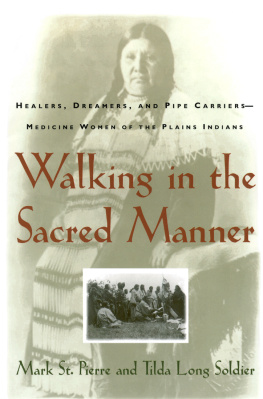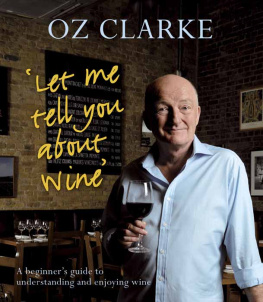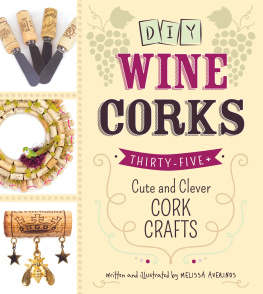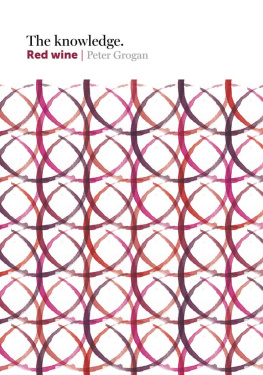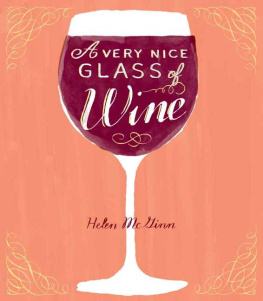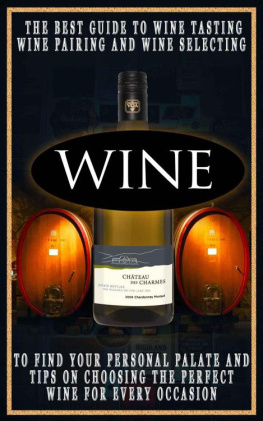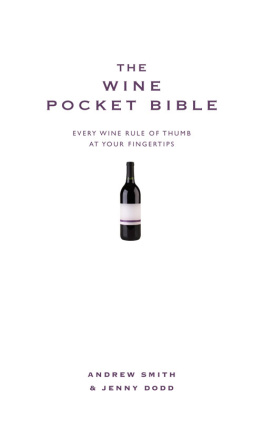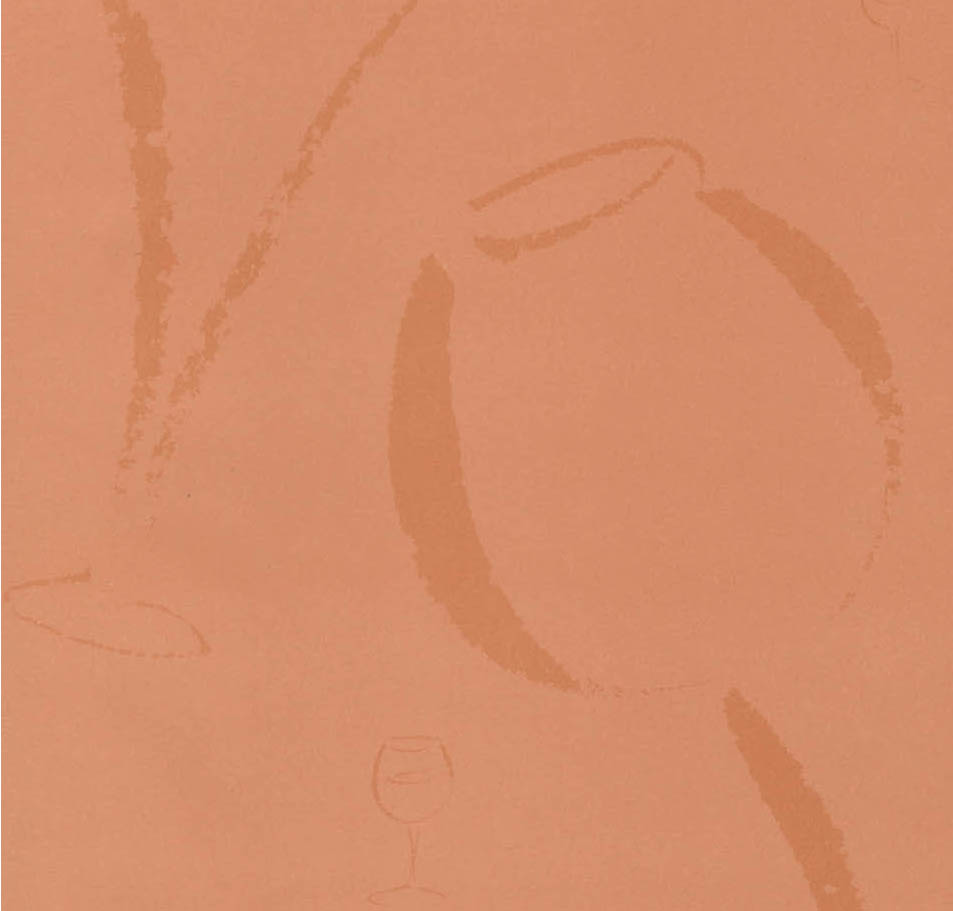




To the memory of Angelo M. Pellegrini, whose book
The Unprejudiced Palate
got me started on the right foot.
Text copyright 1996 by Brian St. Pierre. Photographs copyright 1996 by Deborah Jones.
Maps and Illustrations 1996 by Sally Mara Sturman.
All rights reserved. No part of this book may be reproduced in any form without written permission from the publisher.
ISBN 978-0-8118-7819-7 (epub, mobi)
Library of Congress Cataloging-in-Publication Data:
St. Pierre, Brian.
A perfect glass of wine: choosing, serving, and enjoying / Brian St. Pierre; photographs by Deborah Jones.
p. cm.
ISBN 0-8118-1295-2 (hc)
1. Wine and wine making. I. Title.
TP548.S698 1996
641.22dc20 96-13341
CIP
Book Design: Jill Jacobson
Chronicle Books LLC 680 Second Street San Francisco, CA 94107
www.chroniclebooks.com
ABOUT WINE: A FOCUS ON FLAVOR
There are so many flavors of wine that they may seem infinite. As a practical matter, they might as well befew of us have the time, even if we had the inclination, to explore this entire universe. Fortunately, however, the really useful band of tastes that runs through the center of this spectrum is easily manageable and delivers enough enjoyment to last a lifetime for most of us. A few dozen grapes provide the flavors for thousands of different wines around the world, and once those keys are understood, the doors are forever open.

One of my teachers once said that wine is a chemical symphony. Thats an apt definition, not least because you can get a lot of enjoyment out of wine without knowing any science, just as you can enjoy a symphony without being able to read music. At its most basic, wine is foodit has calories, vitamins, mineralsbut thats an oversimplification. Wine has historic value, flowing like lifeblood through Western religions, culture, and commerce for several thousand years. Managing the making of it created biochemistry long before there were laboratories. Its medical virtues were known as soon as words were written down. It adds elegance to occasions from picnics to coronations, from everyday meals to banquets. Wine endures, and graciously rewards the attention given to it. We get back more than we put in, and, these days, thanks to higher aesthetic and scientific standards, its better than ever.
Grape Expectations
What is wine? No concise definition does it justice. At its simplest, wine is the result of the fermentation of grapes or grape juice. The types of grapes and the various methods of transforming them unfold from there, like a long and fascinating family tree. The branches may not always be straight, but they are remarkably cleartodays modern technology often just reinforces longstanding tradition.
Its been estimated that there are more than four thousand varieties of wine grapes, but fewer than a hundred have any really recognizable flavor and character, and only about two dozen of those stand out so definitely that they have become long-standing international favorites. In this book the most popular variations of those hardy perennials are explored in terms of the grape varieties, for many of which the wines are often named. A straightforward system of identifying a wines flavor, the use of varietal names (such as Chardonnay or Zinfandel), was popularized by the California wine industry a little more than fifty years ago. Today, this way of identifying wine predominates in several countries, especially the United States, Chile, Australia, New Zealand, and South Africa. Its also now common in parts of France and Italy, and much of Eastern Europe. (Wines that are identified by geographical origin, such as Bordeaux, are discussed under names of the principal grapes used, such as Cabernet Sauvignon or Merlot.)
The specific flavors of wine arent easy to describe in words because there are so few common, general references and its as much about sensuality as sense; like love, wine is responsible for a lot of poetry, and quite a bit of sheer silly mush. Jargon and technical terms work well enough among those for whom theyre a professional language. For most people they are an unnecessary and even unwanted burden, with their own limitations. A large part of the enjoyment of wine is hedonistic, subjective, simply a pleasure.
The different grape varieties that Ill be exploring have, like different sorts of apples or cherries or nuts, well-defined flavors, so the varietal system provides a good beginning; with little experience, anyone can travel this road and go as far as he or she wishesits an open ticket. An understanding of the Cabernet Sauvignon grape, for example, is the platform that can launch us into wine from Bordeaux, parts of California, Washington State, Chile, Australia, and other places, and enable us to delight in their variations on the bold theme of that grape. Acquaintance with grape varieties provides the opportunity for an informed choice in terms of flavor; we have no need for geography lessons.

Flavor comes, literally, from the ground up. The old adage says that good wine is made in the vineyard. The best vineyards are in temperate zones, usually on slopes or hillsides, with well-drained soil and a good amount of sun, but not too much. Theres no way to discover these virtues from a label, but the wine itself will usually address the point nicely. New Zealand, for example, is a very cool area for grape growing, and its Sauvignon Blanc can shriek with tartness, like green apples. Sauvignon Blanc from the warmer Napa Valley in California will be milder, much less extreme. With the wines source becoming a secondary signpost to potential flavor, making a choice becomes easier after tasting only a few examples. If the particular variety isnt pleasing, its easy to apply the same taste test to another; there are enough different flavors almost to guarantee that theres a wine for anyones preferences.
How Wine Is Made
A grape is one of the most efficient packages ever designedit contains everything necessary to turn itself into wine. The light dusting of powder on the skin is wild yeast, which gets fermentation started; the skin itself determines the color of the wine, as well as a lot of the aspects of its flavor, and contains tannins, which are astringent compounds found in many fruits that help prevent spoilage from oxygenthe skins of apples and peaches have a similar aspect of tannin, a slightly dried-out, almost papery taste. The pulp is saturated with the juice and contains the sugars that will ferment into alcohol and the acids that keep the wine clean during and after fermentation. The seeds, almost like a back-up unit, also contain tannin and some other acids.
Next page

